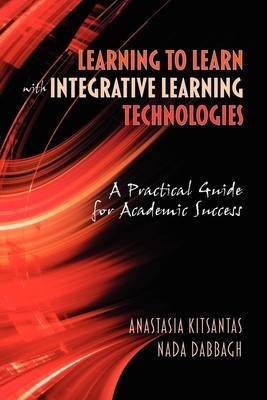
- We will send in 10–14 business days.
- Author: Anastasia Kitsantas
- Publisher: Information Age Publishing
- ISBN-10: 1607523035
- ISBN-13: 9781607523031
- Format: 15.6 x 23.4 x 1.3 cm, hardcover
- Language: English
- SAVE -10% with code: EXTRA
Learning to Learn with Integrative Learning Technologies (Ilt) (e-book) (used book) | bookbook.eu
Reviews
Description
The purpose of this practical guide is to facilitate college students' academic success by fostering self-regulated learning skills or learning to learn through the use of Integrative Learning Technologies (ILT). It enables the college instructor, online instructor, instructional developer, or educator to envision, plan for, and implement customized instructional and curricular designs that foster learning to learn and motivate students to take ownership of their own learning. Specifically, this book demonstrates how college faculty who use Learning Management Systems (LMS) as well as emerging technologies such as Web 2.0 applications and social software can design learning tasks and course assignments that support and promote student: - goal setting - use of effective task strategies - self-monitoring and self-evaluation - time management - help seeking - motivation and affect Given the emphasis on retention of freshmen as a measure of institutional effectiveness, the focus on student success, and the increasing use of ILT in higher education, this book fulfills a dire need in the literature on the integration of technology and self-regulated learning.
EXTRA 10 % discount with code: EXTRA
The promotion ends in 15d.14:02:51
The discount code is valid when purchasing from 10 €. Discounts do not stack.
- Author: Anastasia Kitsantas
- Publisher: Information Age Publishing
- ISBN-10: 1607523035
- ISBN-13: 9781607523031
- Format: 15.6 x 23.4 x 1.3 cm, hardcover
- Language: English English
The purpose of this practical guide is to facilitate college students' academic success by fostering self-regulated learning skills or learning to learn through the use of Integrative Learning Technologies (ILT). It enables the college instructor, online instructor, instructional developer, or educator to envision, plan for, and implement customized instructional and curricular designs that foster learning to learn and motivate students to take ownership of their own learning. Specifically, this book demonstrates how college faculty who use Learning Management Systems (LMS) as well as emerging technologies such as Web 2.0 applications and social software can design learning tasks and course assignments that support and promote student: - goal setting - use of effective task strategies - self-monitoring and self-evaluation - time management - help seeking - motivation and affect Given the emphasis on retention of freshmen as a measure of institutional effectiveness, the focus on student success, and the increasing use of ILT in higher education, this book fulfills a dire need in the literature on the integration of technology and self-regulated learning.


Reviews